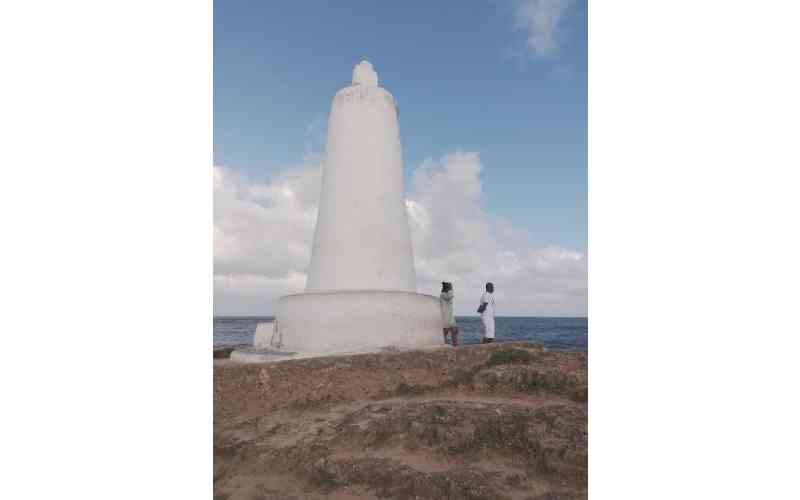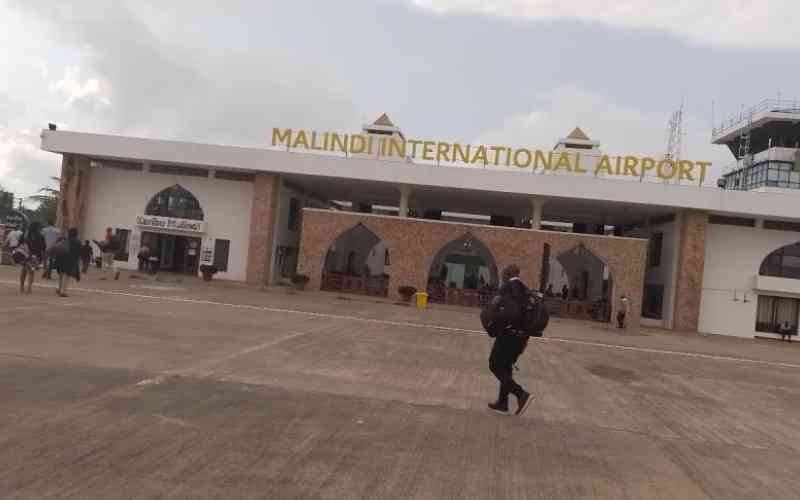
It is 5:45 am, and I am out of my room, anxious to experience the sunrise. I found a few places that gave me a nice view—trees that camouflaged the environment, making it impossible to see the sunrise surrounding my home away from home.
From a distance, I can see the town coming alive to a new bright day. The azure waters seem to be calming down from a rigorous high tide.
The sun, a huge spectacular, beautiful orange ball, appears to rise from the farthest corner of the endless ocean. Its sweeping magical rays kissing the blue waters are a sight to behold.
For a moment, I close my eyes and let my imagination capture those days when Malindi was a golden and cherished destination.
I open my eyes, and right out there, I can see that the Malindi of those years, whose glory, pomp, and fame were taken away by the COVID-19 disruption, is slowly but surely getting back its hype and vibe.
After capturing a memorable sunrise and whiling away time taking a morning beach walk, I am looking forward to a great day exploring the famous town of Malindi—the town I found out last time I visited was glowing with fame with hundreds of visitors and locals “doing their thing,” making Malindi and its tranquil, pristine beaches a beehive of activity.
As I wait for my pick-up, a tuk-tuk, I can almost visualize how the day will be—full of fun, memories, and interactions. I am looking forward to sightseeing; what makes these places lively for me are the interactions—families, tourists, and locals all involved in various activities.
I take a tuk-tuk “ride of honour” to catch the mood of Malindi after sunrise. Later, I head back to my Airbnb (there are several of these facilities) to prepare breakfast.
- A captivating drive through Machakos
- EAC to market tourism as a block as regional expo kicks off in Nairobi
- Trends that will drive tourism, travel in 2024
- Story behind the enduring legacy of Tsavo
Keep Reading
By the time I am through, the streets are already bustling with activity, honking from vehicles, taxis, tuk-tuks, and motorcycles. Things have changed after the disastrous pandemic when the common means of transport within town and its outskirts was by taxis only.
I have work to do back at my accommodation, so after a two-and-a-half-hour ride exploring Malindi town, I am back to base, where I get down to do my assignment before taking an evening stroll to inhale the fresh air from the sea and the adjacent Arabuko-Sokoke forest.
Exploring Malindi’s Best
My tuk-tuk driver for the day arrives at 8:30 am. We are set for the day’s tour of Malindi, but when I tell Suleiman that I was here long before COVID-19, he quickly points out that so much has changed.
"The charm of the quaint tourist attraction is now visible, and for the discerning traveller, Malindi seems to be regaining its lost glory."
Suleiman notices my silence as I take in what this means for my visit and quickly points out that all is not lost and the effects of COVID-19 “that crushed Malindi” are now waning, and the tourist town is slowly picking up.
After exploring the outskirts, I discovered that most of the beaches are now active, with some hospitality joints that were once the fame of Malindi waking up. The locals are back at the beaches due to the growing number of visitors and enthusiastic travellers.
“Some investors that had left Malindi, and new ones, especially Germans and Italians, taking their business elsewhere like Nairobi and Mombasa, while others have opted to go home, are now finding a way back to an attractive Malindi,” says Suleiman.
He jokingly points out that the ones that stuck around are die-hards who were born and bred in Malindi, which they call home. Indeed, the local Germans and Italians have adopted the local language and coastal culture.
The town is now “a new” attraction with so many popular spots, with some getting bookings that help keep them afloat, while other new joints are opening. Those that stood the test of time are reaping benefits as Malindi struggles to return to its former glory.
Vasco da Gama Pillar
The Vasco da Gama pillar is our first stop, and the work that has gone into reclaiming the historical place of this valuable pier is witnessed by the visitor from the entry point to the pier itself and within the surroundings, some of which, like the Portuguese little church, are historical monuments.
I asked Suleiman about the Vasco da Gama Pillar, and he told me that though it had also experienced COVID-19 challenges, even before, it had suffered from a lack of restoration and refurbishment, even though it remained operational.

However, he adds, in recent times it has gone through a complete revamp and is attracting visitors.
Next stop? The Malindi Falconry.
I remembered that the last time I was here, I visited the Malindi Falconry; I was so excited that I promised myself I would do a repeat visit—to have some fun with Mzee Kobe the tortoise (if he was still alive) and the eagles as I commanded them to fly out and back to my hand.
The falconry is known as the Falconry of Kenya Greif Vogel Park and Eagle Park. The establishment hosts many animals, including a star tortoise, which is now 128 years old. He seems to be ageing gracefully.
Apart from tortoises, there are crocodiles; snakes like pythons, the venomous puff adder, and black mamba; monitor lizards, bush babies, owls, hawks, and my favourite, the eagle.
Although the falconry is a tourist attraction for tourists and locals, especially students, Kahindi, a falconer, explains that it has been and will always be an orphanage for rescued animals.
“Every day my team wakes up early to feed the animals and birds, ensuring that they are healthy after they are brought here with injuries or when they fall due to strong winds,” says the falconer.
Those that are healed are taken back to the forest or the wild. He says this is because animals and birds are meant to live free.
 The Standard Group Plc is a multi-media organization with investments in media
platforms spanning newspaper print
operations, television, radio broadcasting, digital and online services. The
Standard Group is recognized as a
leading multi-media house in Kenya with a key influence in matters of national and
international interest.
The Standard Group Plc is a multi-media organization with investments in media
platforms spanning newspaper print
operations, television, radio broadcasting, digital and online services. The
Standard Group is recognized as a
leading multi-media house in Kenya with a key influence in matters of national and
international interest.










